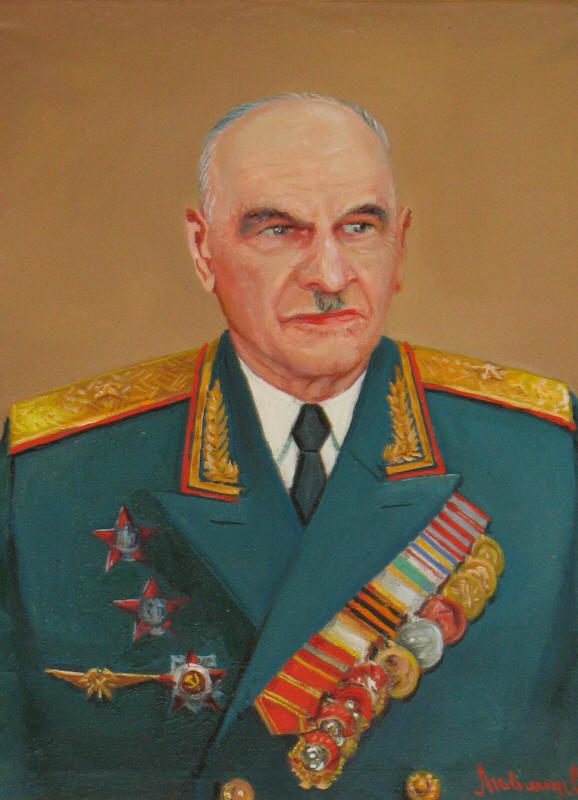 Konstantin Sakhnovsky
Konstantin SakhnovskyAn outstanding Russian and Soviet scientist, a participant in two wars, Konstantin Sakhnovsky (1879–1971) graduated with honors from the Poltava Cadet Corps, then from the Nikolaev Engineering School. In 1901, with the rank of second lieutenant, he was enlisted in the Grenadier Sapper Battalion in Moscow. Two years later, Konstantin Viktorovich entered the Nikolaev Engineering Academy, but his studies were interrupted by the Russo-Japanese War. For exemplary performance of military duty, Lieutenant Sakhnovsky was awarded five military awards. In 1908, he graduated from the academy with a medal and was listed on a marble plaque with the rank of military engineer. He participated in the construction of railways, fortifications in Kronstadt and the Sveaborg fortress in Helsingfors (now Helsinki), in research work on the island of Berezan in the Black Sea, where he first used reinforced concrete structures for the construction of fortifications.
In 1917, Colonel of the Engineering Troops Konstantin Sakhnovsky supported the October Revolution and continued to work as an assistant to the chief engineer on the construction of the Sveaborg fortress, and upon returning to Petrograd, he took the position of senior manager of work on the construction of the Svir hydroelectric power station, and became an associate professor at the Military Engineering Academy of the Red Army. The results of his work on Berezan Island were counted as a candidate's dissertation.
Having become a professor and head of the department, Konstantin Viktorovich also worked as the chief designer of reinforced concrete structures at Volkhovstroy. Under his leadership, projects were developed for 30 buildings and structures, including the thermal power plant of the Kirov district of Leningrad, the stadium named after S. M. Kirova Tikhvin Aluminum Plant, Dnepropetrovsk Magnesium Plant. During the Great Patriotic War, he trained military engineers. In 1943, as a military consultant on fortification equipment, he was in the 2nd Air Army on the Volkhov Front and in the 1st Air Army on the Leningrad Front. For exemplary performance of tasks he was awarded the Order of the Patriotic War, second degree.
From 1948 to 1960, Konstantin Sakhnovsky headed the department of reinforced concrete structures at the Leningrad Civil Engineering Institute (LISI, now SPbGASU).
Since 1913, he had published more than 70 scientific works and textbooks on reinforced concrete, including the first domestic monograph on this topic, “Reinforced Concrete Structures” (1924) and the textbook “Reinforced Concrete Structures,” which went through nine editions and was the main textbook for a long time in this discipline at construction faculties of universities and in design institutions.
In 1946, Konstantin Sakhnovsky was awarded the academic degree of Doctor of Engineering Sciences. In 1954 he was awarded the honorary title of Honored Worker of Science and Technology of the RSFSR, and in 1957 he was elected a full member of the Academy of Construction and Architecture of the USSR.
He was awarded two Orders of Lenin, the Order of the Red Banner and the Order of the Patriotic War of the second degree, the Order of the Badge of Honor, two Orders of the Red Star and medals.
Other materials of the "Scientific Regiment" project
Our Graduate Built the Road of Life
Front Line of the Architect Aleksandr Nikolsky
Researcher who Developed Science in Besieged Leningrad
Fights of Student Klinov
Engineer of the 3rd Belorussian Front
Nineteen-Year-Old Gunner Stormed Berlin
Path of a Volunteer: from Front-Line Roads to Space Development
Ivan Solomakhin: "The Most Memorable Battle was for this Devil's Hill!"
Fiery Dnieper of the Hero of the Soviet Union Aleksandr Prygunov
Approaching to the Victory
Fedor Komal's Front: from the War Start to the Victory
Junior Political Instructor Boris Gubanov: “Shells Were Whizzing, and the Ground Took off Nearby”
Viktor Kvyatkovsky, Radio Reconnaissance Operator of the Baltic Fleet
How the Chief Architect Nikolai Baranov Kept Leningrad "Hidden" from the Enemy
Architect Nikolai Khomutetsky: Four Years at the Forefront
Semyon Shifrin Thwarted Nazi Plans to Leave Leningrad Waterless
LISI in the Post-War Years
LISI Graduate Mikhail Zherbin, Design Engineer and Composer
Abdulla Mangushev: Four Years at the Front and the Whole Life in Science
Architects Zazerskys Built and Defended the City on the Neva River
Worked His Way Up From a Lieutenant Technician to the Galaxy of Mathematicians